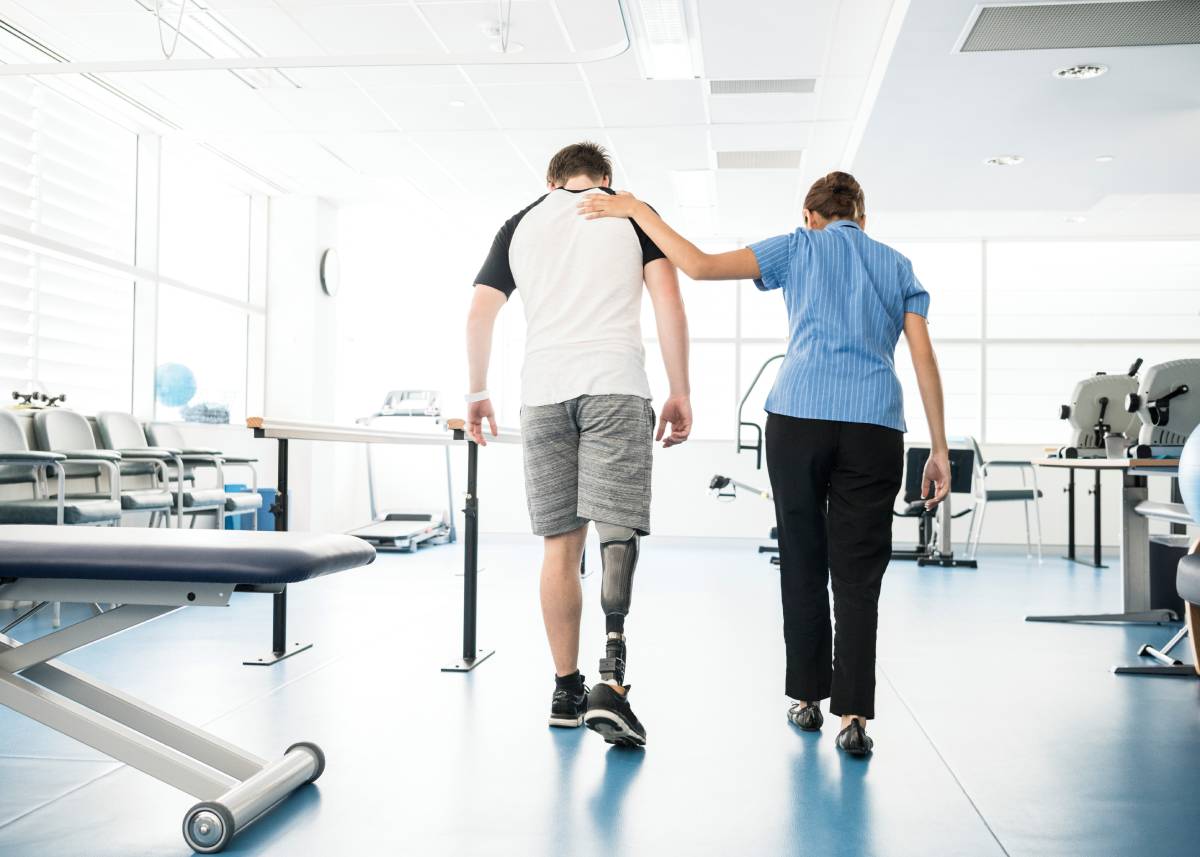Limb amputation is a last resort treatment option in dire cases of diabetes mellitus, vascular disease, infection, trauma, or cancer. A national report estimated 1.6 million people living with limb loss as of 2006; this number is projected to double by the year 2050 unless more resources are applied toward prevention [1]. Phantom limb pain (PLP) is the unsettling awareness of or pain in a limb, organ, or tissue after amputation or nerve injury, at which point the patient should not physically be able to experience sensation in that area [2]. Since its first report in the 16th century by French military physician Ambroise Paré, phantom limb pain is reported very frequently after amputation surgery, with a conservative statistic of 50-78% incidence [3]. Patients with post-amputation PLP often report sensations of burning, pricking, piercing pain, or simply the existence of a previously amputated limb. These sensations are often modulated by psychological, environmental, or physical stimuli [4].
In PLP, pain sensations, which are a protective mechanism for the body, can become chronic and unrelenting, often exacerbating the decreased quality of life after limb loss. While this pain is equally frequent across different ages, sexes, sides of the body and levels of amputation, congenital amputees who undergo amputation at a younger stage in life are less likely to develop PLP [4]. Clinical and observational experiments have indicated generation of PLP may be initiated by changes in dorsal root ganglia (DRG), clusters of neurons in the dorsal root of a spinal nerve which convey sensory information to the central nervous system [5]. After a spinal nerve is cut, the DRG cells become more active, firing spontaneously at high frequencies (~30 Hz) [6]. White matter tracts of nerve-injured mice displayed upregulation of PKMζ, a protein kinase essential for maintaining pain-related long-term potentiation [7]. Mice that are missing adenylyl cyclase 1 (AC1), a protein that is also involved in chronic pain-related neuronal plasticity, exhibited significantly reduced behavioral allodynia, or pain sensitivity [7].
Patients with PLP display marked differences in neuronal structures. Jiang et al. studied 17 amputees and 18 healthy controls using T1-weighted MRI and DTI neuroimaging techniques. While gray matter differences were largely unsignificant across the cohorts, white matter (WM) tracts appeared to be reduced in the right temporal lobe, left premotor cortex and the inferior fronto-occipital fasciculus (IFOF) of amputees [8]. Partial correlation analyses revealed white matter reduction of the IFOF, a region crucial in connecting semantic language processing to goal-directed behavior, was correlated to the time since amputation, indicating WM effects in patients with PLP appeared largely as a result of acquired limb loss [8].
While the etiology of phantom limb pain is still largely unclear, treatments for the phenomenon include pharmacotherapy, adjuvant therapy, or surgical intervention in extreme cases [2]. A well-cited study showed amitriptyline, a tricyclic antidepressant, to be useful in alleviating neuropathic pain; however, adverse effects of the drug such as fatigue or increased perspiration deterred most participants from using the drug on a regular basis [2,9]. Although medication is a “quick fix” for many participants, adjuvant therapy such as transcutaneous electrical nerve stimulation (TENS) or mirror box therapy provide more long-lasting benefits, despite a slower initiation period [9]. TENS is often the first choice of therapy because it is accessible, easy-to-use, and relatively low-cost. In this therapeutic approach, small battery-powered devices transmit an electrical current to electrodes placed strategically around the missing limb, desensitizing the area to extraneous pain [10]. Mirror box therapy allows the patient to perceive the missing limb by focusing on the reflection of the stump in a mirror. In theory, this technique promotes reconfiguration of the patient’s somatosensory homunculus, the “little man” Dr. Wilder Penfield proposed as a somatotopic representation of the body [11]. Recent years have seen developments in virtual reality therapy, which employs many of the same theoretical points as mirror box therapy [2,10].
As there is still no detailed description of the mechanisms behind PLP, current treatment methods revolve around pain relief and improving QOL. As scientific research in this field progresses, mechanism-based therapies can be developed, potentially benefiting many more patients.
References
1. Ziegler-Graham, K., MacKenzie, E. J., Ephraim, P. L., Travison, T. G., & Brookmeyer, R. (2008). Estimating the prevalence of limb loss in the United States: 2005 to 2050. Archives of Physical Medicine and Rehabilitation, 89(3), 422–429. https://doi.org/10.1016/j.apmr.2007.11.005
2. Kaur Amreet & Guan Yuxi. (2018). Phantom limb pain: A literature review. Chinese Journal of Traumatology. https://medcentral.net/doi/abs/10.1016/j.cjtee.2018.04.006
3. Jackson, M.A., Simpson, K.H. (2004). Pain after amputation. Continuing Education in Anaesthesia Critical Care & Pain, 4(1), 20–23, https://doi.org/10.1093/bjaceaccp/mkh007
4. Nikolajsen, L., & Christensen, K. F. (2015). Chapter 2—Phantom limb pain. In R. S. Tubbs, E. Rizk, M. M. Shoja, M. Loukas, N. Barbaro, & R. J. Spinner (Eds.), Nerves and Nerve Injuries (pp. 23–34). Academic Press. https://doi.org/10.1016/B978-0-12-802653-3.00051-8
5. Haberberger, R. V., Barry, C., Dominguez, N., & Matusica, D. (2019). Human dorsal root ganglia. Frontiers in Cellular Neuroscience, 13. https://www.frontiersin.org/article/10.3389/fncel.2019.00271
6. Kajander, K. C., Wakisaka, S., & Bennett, G. J. (1992). Spontaneous discharge originates in the dorsal root ganglion at the onset of a painful peripheral neuropathy in the rat. Neuroscience Letters, 138(2), 225–228. https://doi.org/10.1016/0304-3940(92)90920-3
7. Koga, K., Li, S., & Zhuo, M. (2016). Metabotropic glutamate receptor dependent cortical plasticity in chronic pain. Current Neuropharmacology, 14(5), 427–434. https://doi.org/10.2174/1570159×13666150425002304
8. Jiang, G., Yin, X., Li, C., Li, L., Zhao, L., Evans, A. C., Jiang, T., Wu, J., & Wang, J. (2015). The plasticity of brain gray matter and white matter following lower limb amputation. Neural Plasticity, 2015, e823185. https://doi.org/10.1155/2015/823185
9. Eija, K., Tiina, T., & Pertti J, N. (1996). Amitriptyline effectively relieves neuropathic pain following treatment of breast cancer. Pain, 64(2), 293–302. https://doi.org/10.1016/0304-3959(95)00138-7
10. Black, L. M., Persons, R. K., & Jamieson, B. (2009). What is the best way to manage phantom limb pain? https://mospace.umsystem.edu/xmlui/handle/10355/3901
11. Vance, C. G., Dailey, D. L., Rakel, B. A., & Sluka, K. A. (2014). Using TENS for pain control: The state of the evidence. Pain Management, 4(3), 197–209. https://doi.org/10.2217/pmt.14.13
